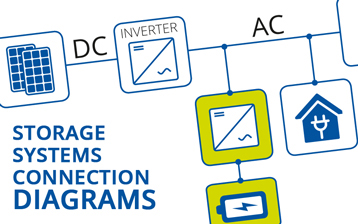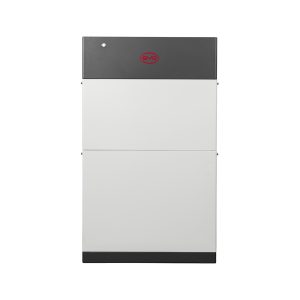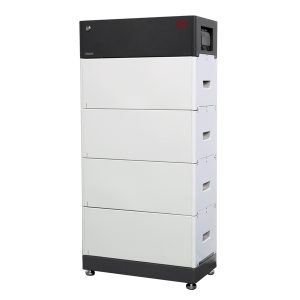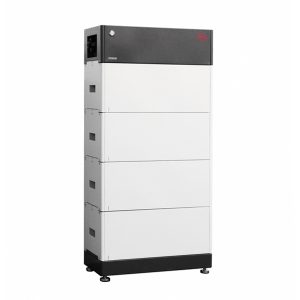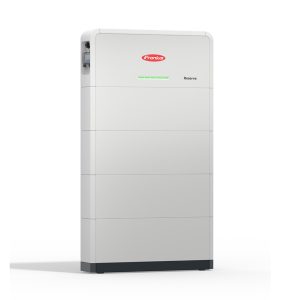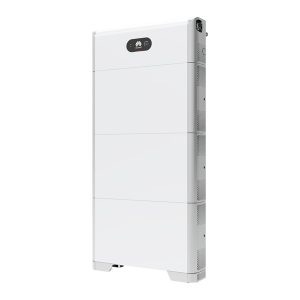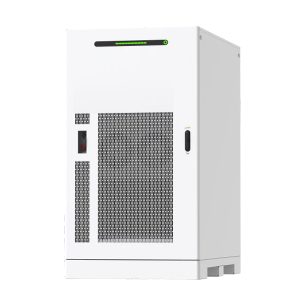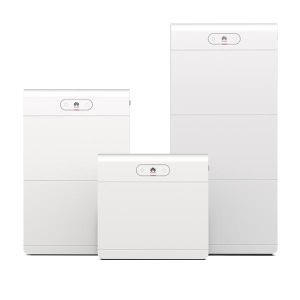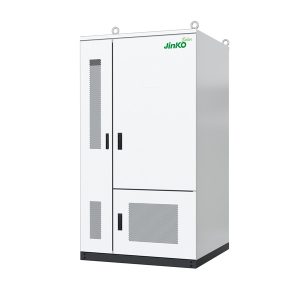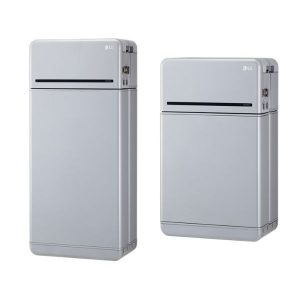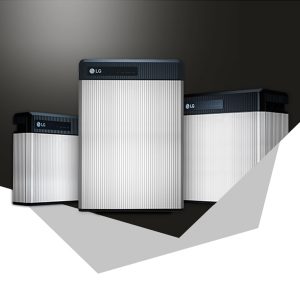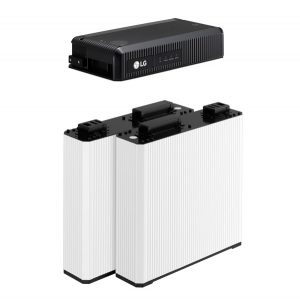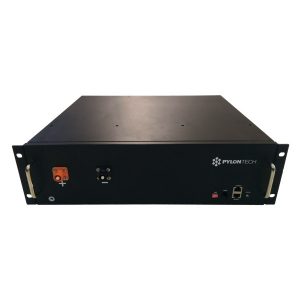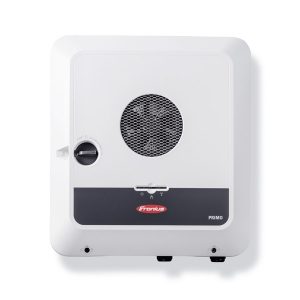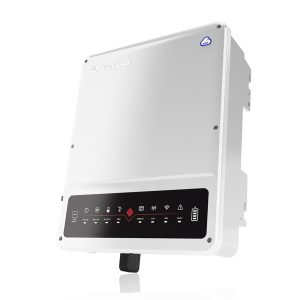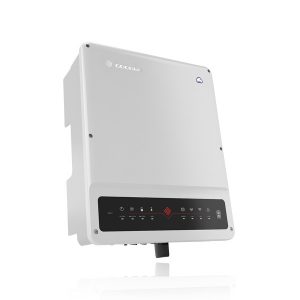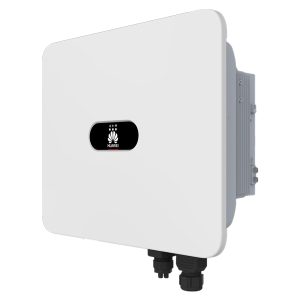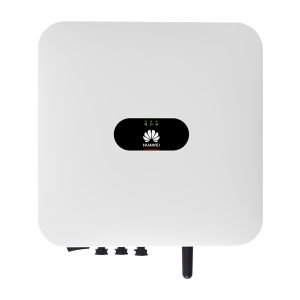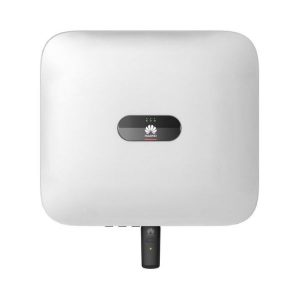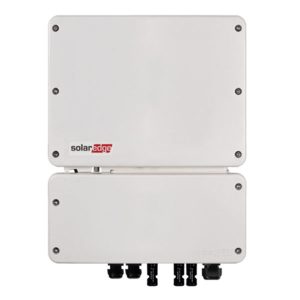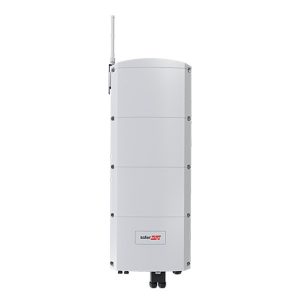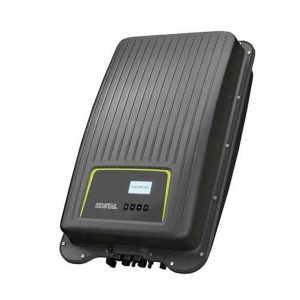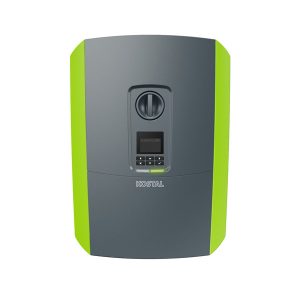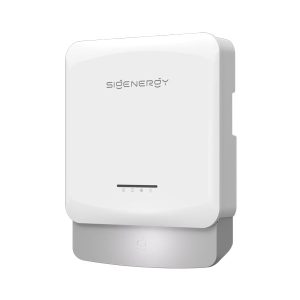A storage system is defined as a set of devices capable of absorbing and releasing electrical energy that can generally be identified in the batteries, in the BMS (battery management system) and in the converter, which can be configured in different ways.
In practice, the different configurations that a storage system can have and the method of connection to the grid are identified as follows:
Connection to the energy network
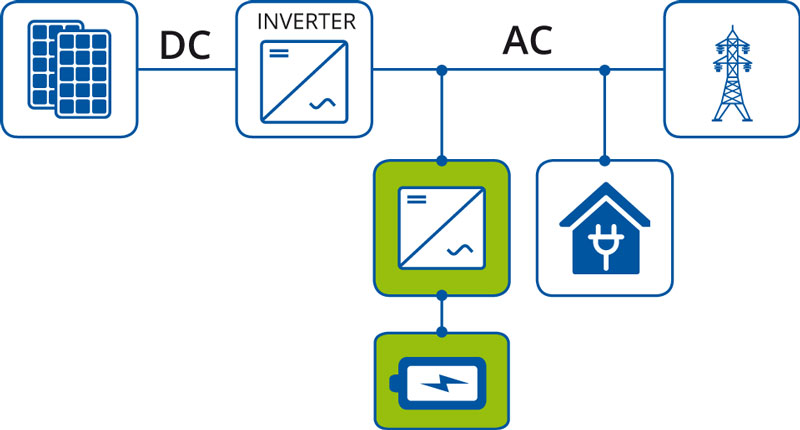
AC side: It is a connection scheme that keeps the configuration of the existing photovoltaic system unchanged, which is why it is also called Retrofit.
The storage system inverter and the photovoltaic inverter are two distinct machines; the power of the accumulator is added to the power of the photovoltaic.
This scheme is also adopted for new systems, especially if they are of high power.
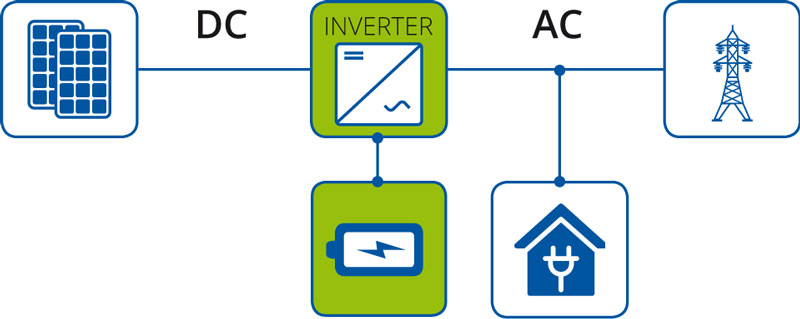
DC side storage system: In this system configuration, the inverter that manages the storage and production of energy from the photovoltaic is a single machine; the power that is supplied is at most equal to that of the only inverter present.
From a theoretical point of view, the efficiency of this connection scheme is slightly greater than that for the AC side connection.
Characteristics of the inverters
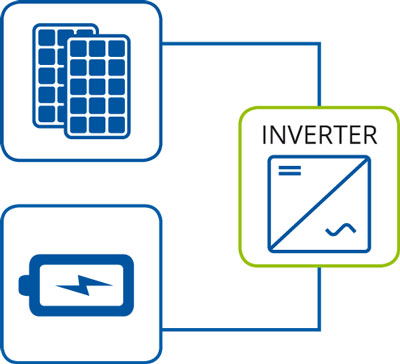
Hybrid inverter
In common parlance, an inverter is defined as a hybrid that is able to convert both the power developed by the photovoltaic system and that available in the battery, even independently of each other.
In most of the products on the market there is a dedicated input for each of the energy sources. Hybrid inverters can be configured on connection AC or DC side.
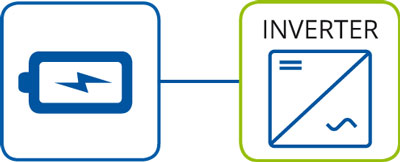
Battery Inverter
They are those products intended exclusively for the conversion of battery energy. They can only be connected in the figuration of the AC side system.
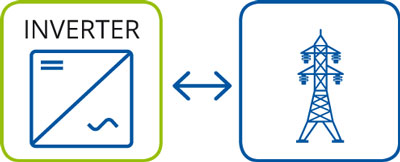
Bidirectional inverter
They are defined as bidirectional in the context of storage inverters, those devices that are also able to draw energy from the grid to recharge the batteries.
This function, which may not seem economically advantageous, may instead prove necessary to ensure a long life of the battery avoiding deep discharges (for example in the event of a photovoltaic failure).
It can also be used to ensure a certain stored energy and then make it available at times of greatest demand (peak shaving) or when it is economically more convenient.
Receive our Map for free!
- 12 manufacturers of photovoltaic storage systems
- Matching inverters and batteries
- All the combinations available
- Type of system: hybrid or AC connection
- Type of network: three-phase or single-phase
- Product warranty: years and % of remaining capacity
- All data on power and storage capacity
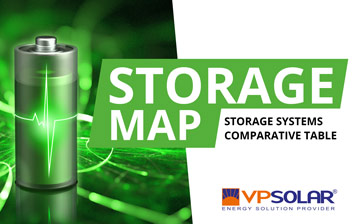
-
BYD, Storage Battery
BYD Battery-Box HVE
BYD Battery-Box HVE batteries represent one of the most innovative solutions on the market, thanks to design and performance features conceived to offer maximum flexibility and reliability.
- LFP batteries
- Modules with different capacities (4.29 or 6.45 kWh)
- Stackable system (up to 4 modules in series)
- Patented plug-in system
- Warranty: 15 years
SKU: n/a -
BYD, Storage Battery
BYD: Battery-Box Premium HVS / HVM – high voltage – from 5.1 to 66.2 kWh
The new high voltage batteries of the BYD brand are devices compatible with many single-phase and three-phase inverter brands.
BATTERY-BOX PREMIUM HVS
- composed of 2 to 5 HVS battery modules
- capacity of 5.1 to 12.8 kWh
BATTERY-BOX PREMIUM HVM
- composed of 3 to 8 HVM battery modules
- capacity of 8.3 to 22.1 kWh
SKU: n/a -
BYD, Storage Battery
BYD: Battery-Box Premium LVS – low voltage – from 3.8 kWh to 245.8 kWh
BYD Battery-Box Premium LVS low voltage battery (48V) to be combined with various three-phase and single-phase inverters.
- Scalable from 4 kWh to 246 kWh
- Maximum Flexibility for any application with up to 64 Modules connected in parallel
- Capable of High-Powered Emergency-Backup and Off-Grid Function
- Patented Internal Plug Design Requires No Additional Wiring
SKU: n/a -
Fronius, Storage Battery
Fronius Reserva
Fronius Reserva is the ideal storage solution for those who want a complete and perfectly integrated system developed by a single manufacturer.
- Lithium-iron-phosphate (LFP) battery
- Nominal capacity (single module): 3.15 kWh
- Stackable system (up to 5 modules in series)
- Ultra-slim design and space-saving installation
- 10-year warranty (residual capacity ≥80%)
SKU: n/a -
Huawei, Storage Battery
Huawei LUNA2000 – smart string battery – 5/10/15 kWh
Lithium batteries for photovoltaic storage. Modular system with 5 kWh stackable battery packs with 100% discharge capacity.
- Modular design of 5kWh, 10 kWh and 15 kWh and parallelable up to 2 systems for a total of 30 kWh
- 10 year guarantee
- Configurable with Huawei Hybrid Single and Three Phase Inverters
SKU: n/a -
Huawei, Storage Battery
Huawei LUNA2000 107-215 – C&I BESS storage system with hybrid cooling
The Huawei LUNA2000-(107-215) system is the ideal solution for commercial and industrial installations that require high-capacity energy storage, scalability and maximum safety.
- Available storage capacities: 215 kWh, 161 kWh, 107 kWh
- Charging/discharging power: up to 108 kW
- LFP cells
- Maximum cycle efficiency: 3 % (@ 0.25 C)
- Protection rating: IP55
SKU: n/a -
Huawei, Storage Battery
Huawei LUNA2000-7/14/21-S1
Storage system with 6.9 kWh LFP cells, modular solution with the possibility of stacking up to three battery packs per tower with a maximum capacity of 20.7 kWh parallelable up to 4 towers for a total of 82.8 kWh.
Huawei inverter compatible batteries:
- SUN2000-12/15/17/20/25K-MB0
- SUN2000-3/4/5/6/8/10KTL-M1
- SUN2000-2/3/3.68/4/4.6/5/6KTL-L1
SKU: n/a -
Jinko Solar, Storage Battery
Jinko Solar: Sungiga – all-in-one cabinet for C&I applications
The Sungiga JKS-215KLAA-100PLAA is an all-in-one energy storage solution which packs battery modules, BMS, PCS, fire suppression systems and liquid cooling in a single cabinet.
- Capacity: 215 kWh
- Charge/discharge power: 100 kW
- Liquid cooling
- Integrated fire suppression system
- IP 55
- Cloud-based monitoring
SKU: n/a -
LG Energy Solution, Storage Battery
LG Energy Solution PRIME – high voltage – 10H/16H
LG PRIME offers maximum safety for electricity consumption regardless of external uncertainties, achieving energy independence through the conservation of self-produced and eco-friendly solar energy.
- It works in temperatures ranging from -10°C to 50°C, so it is suitable for any type of weather conditions.
- The installation can be done both on the wall and on the floor.
- Available sizes: PRIME 10H, PRIME 16H.
SKU: n/a -
LG Energy Solution, Storage Battery
LG Energy Solution RESU – low voltage – 6.5/10/12
LG Energy Solution with RESU battery packs 48 V provides the most advanced solution in the market with regard to lithium-ion view the best energy density, high quality and reliability.
Three levels of basic skills from 6.5 kWh, 9.8 kWh and 13.1 kWh with expandability up to 26,2 kWh.
- Compact size and easy installation
- Better energy density in the world
- Tested safety
SKU: n/a -
LG Energy Solution, Storage Battery
LG Energy Solution RESU – high voltage – 10M
High-voltage residential battery with modular design consisting of two battery modules and a BPU (Battery Protection Unit), which make it extremely handy and easy to install.
- battery module weight 36Kg, total weight with all three parts combined 80 kg
- extremely small size: base 45cm x height 51cm and 24cm deep
- compatible with Sunny Boy Storage 3.7 inverters
- RESU10M energy 9.8 kWh
SKU: n/a -
Pylontech, Storage Battery
Pylontech H48050A lithium battery HIGH voltage
The Pylontech H48050A lithium battery is the module that connected in series allows to obtain storage systems with different types of working voltages and storage capacity, depending on the application. The system consists of a control module and several battery modules.
- 4.8 kWh energy for single-phase systems and 9.6 kWh for three-phase systems
SKU: n/a
-
Fronius, Fronius, Fronius, Hybrid inverter, Inverter, Inverter residential systems, Photovoltaic inverter, Retrofit
Fronius Primo GEN24 and GEN24 Plus – string single-phase & hybrid single-phase – 3.0/ 6.0 kW
 Fronius, Fronius, Fronius, Hybrid inverter, Inverter, Inverter residential systems, Photovoltaic inverter, Retrofit
Fronius, Fronius, Fronius, Hybrid inverter, Inverter, Inverter residential systems, Photovoltaic inverter, RetrofitFronius Primo GEN24 and GEN24 Plus – string single-phase & hybrid single-phase – 3.0/ 6.0 kW
GEN24 Plus single-phase hybrid inverter, with back-up function, for domestic systems.
- Integrated Data communication
- Full Back-up (GEN24 Plus only)
- PV point basic grid backup
- Available models: GEN24, GEN24 Plus
- Available sizes: 3.0 / 3.6/ 4.0 / 4.6 / 5.0 / 6.0 kW
SKU: n/a -
Fronius, Fronius, Fronius, Hybrid inverter, Inverter, Inverter residential systems, Photovoltaic inverter, Retrofit
Fronius Symo GEN24 and GEN24 Plus – string three-phase & hybrid three-phase – 2 MPPT – 3.0/10.0 kW Plus
 Fronius, Fronius, Fronius, Hybrid inverter, Inverter, Inverter residential systems, Photovoltaic inverter, Retrofit
Fronius, Fronius, Fronius, Hybrid inverter, Inverter, Inverter residential systems, Photovoltaic inverter, RetrofitFronius Symo GEN24 and GEN24 Plus – string three-phase & hybrid three-phase – 2 MPPT – 3.0/10.0 kW Plus
The new generation of three-phase Fronius inverters guarantees maximum flexibility and efficiency.
- Integrated Data communication
- Dynamic Peak Manager
- Multi Flow Technology
- SuperFlex Design
- Full Back-up (GEN24 Plus only)
- PV point basic grid backup
- Available models: GEN24, GEN24 Plus
- Available sizes: 3.0 / 4.0 / 5.0 / 6.0/ 8.0 / 10.0 kW
SKU: n/a -
GoodWe, GoodWe, Hybrid inverter, Inverter, Photovoltaic inverter, Residential inverter GoodWe
GoodWe EH single phase storage inverter – 2MPPT – 3.6 / 5 / 6kW
 GoodWe, GoodWe, Hybrid inverter, Inverter, Photovoltaic inverter, Residential inverter GoodWe
GoodWe, GoodWe, Hybrid inverter, Inverter, Photovoltaic inverter, Residential inverter GoodWeGoodWe EH single phase storage inverter – 2MPPT – 3.6 / 5 / 6kW
Single-phase hybrid inverter for high voltage batteries, with UPS and 2 MPPT function, pre-wired cables for quick and easy installation.
- UPS level automatic switch in 10ms
- Wide battery voltage range 85~460V
- Large loads when back-up
- Pre-wired communication cables
- Available sizes: GW6000-EH
SKU: n/a -
GoodWe, GoodWe, Hybrid inverter, Inverter, Photovoltaic inverter, Residential inverter GoodWe
GoodWe ET Plus – hybrid three-phase inverters – 5/10 kW
 GoodWe, GoodWe, Hybrid inverter, Inverter, Photovoltaic inverter, Residential inverter GoodWe
GoodWe, GoodWe, Hybrid inverter, Inverter, Photovoltaic inverter, Residential inverter GoodWeGoodWe ET Plus – hybrid three-phase inverters – 5/10 kW
ET series three-phase hybrid inverter with DC coupling.
- Maximum efficiency up to 98.2%.
- Uninterruptible Power Supply Function (UPS)
- Wide battery voltage range
- Fanless design, quiet operation
- Available sizes: GW8KN-ET, GW10KN-ET
SKU: n/a -
Commercial inverter Huawei, Huawei, Huawei, Hybrid inverter, Inverter
Huawei SUN2000 12/15/17/20/25 K-MBO – three-phase hybrid inverter
 Commercial inverter Huawei, Huawei, Huawei, Hybrid inverter, Inverter
Commercial inverter Huawei, Huawei, Huawei, Hybrid inverter, InverterHuawei SUN2000 12/15/17/20/25 K-MBO – three-phase hybrid inverter
Three-phase hybrid SUN2000 12/15/17/20/25 K-MBO inverter ideal for C&I systems, with sizes ranging from 12 to 25 kW
- Efficiency up to 98.2
- Weight and footprint (546 x 460 x 228 mm, weight approx. 21kg)
- IP66 degree of protection
SKU: n/a -
Huawei, Huawei, Hybrid inverter, Inverter, Photovoltaic inverter, Residential inverter Huawei
Huawei SUN2000 2/3/3.68/4/4.6/5/6 KTL-L1 – single-phase hybrid inverter
 Huawei, Huawei, Hybrid inverter, Inverter, Photovoltaic inverter, Residential inverter Huawei
Huawei, Huawei, Hybrid inverter, Inverter, Photovoltaic inverter, Residential inverter HuaweiHuawei SUN2000 2/3/3.68/4/4.6/5/6 KTL-L1 – single-phase hybrid inverter
The Huawei SUN2000 KTL-L1 single-phase hybrid inverter was created to maximize the energy self-consumption of your single-phase system and guarantees high yields and reliable performance.
- 2 MPPT
- RS485, Optional: Ethernet, WiFi, 4G
- Integrated AFCI
- IP65 protection rating
- Available sizes: 2/3/3.68/4/5/6 KTL-L1
SKU: n/a -
Commercial inverter Huawei, Huawei, Huawei, Hybrid inverter, Inverter, Photovoltaic inverter, Residential inverter Huawei
Huawei SUN2000 3/4/5/6/8/10 KTL-M1-HC – three-phase hybrid inverter
 Commercial inverter Huawei, Huawei, Huawei, Hybrid inverter, Inverter, Photovoltaic inverter, Residential inverter Huawei
Commercial inverter Huawei, Huawei, Huawei, Hybrid inverter, Inverter, Photovoltaic inverter, Residential inverter HuaweiHuawei SUN2000 3/4/5/6/8/10 KTL-M1-HC – three-phase hybrid inverter
The Huawei SUN2000 KTL-M1-HC three-phase hybrid inverter is an efficient and elegant product, created to maximize the energy consumption of your three-phase system.
- Weight and size reduced (525X470X146.5 mm, weight about 17kg)
- Efficiency up to 98.6%
- IP65 protection with natural cooling
- Available sizes : 3/4/5/6/8/10 KTL-M1-HC
SKU: n/a -
Hybrid inverter, Inverter, Photovoltaic inverter, Residential inverter, SolarEdge, SolarEdge
Inverter Hub Solaredge Home single – phase
 Hybrid inverter, Inverter, Photovoltaic inverter, Residential inverter, SolarEdge, SolarEdge
Hybrid inverter, Inverter, Photovoltaic inverter, Residential inverter, SolarEdge, SolarEdgeInverter Hub Solaredge Home single – phase
SolarEdge has developed the single-phase Hub Home Inverter (2.5-6kW), a device capable of managing home energy.
- DC oversizing up to 200%
- Module level monitoring
- 12 year warranty, extendable up to 25 years
- Available sizes: SE3000H – SE3680H – SE4000H – SE5000H – SE6000H
SKU: n/a -
Hybrid inverter, Inverter, Photovoltaic inverter, Residential inverter, SolarEdge, SolarEdge
Inverter SolarEdge Home Hub – three-phase – SE5K-10K RWB48
 Hybrid inverter, Inverter, Photovoltaic inverter, Residential inverter, SolarEdge, SolarEdge
Hybrid inverter, Inverter, Photovoltaic inverter, Residential inverter, SolarEdge, SolarEdgeInverter SolarEdge Home Hub – three-phase – SE5K-10K RWB48
Three phase inverter for storage and backup applications
- DC oversizing up to 200%
- Module-level monitoring
- Backup function with three-phase backup interface
- 12 years warranty
- Available sizes: SE5K-RWB48 – SE8K-RWB48 – SE10K-RWB48
SKU: n/a -
Hybrid inverter, Inverter, Kostal, Kostal, Kostal, Photovoltaic inverter, Residential inverter Kostal, Retrofit
Kostal PIKO MP Plus
 Hybrid inverter, Inverter, Kostal, Kostal, Kostal, Photovoltaic inverter, Residential inverter Kostal, Retrofit
Hybrid inverter, Inverter, Kostal, Kostal, Kostal, Photovoltaic inverter, Residential inverter Kostal, RetrofitKostal PIKO MP Plus
Compact and flexible single-phase hybrid inverter. With the addition of the Smart Energy Manager a storage system can be connected.
- power classes of between 1.5-4.6 kW
- One or two MPP trackers
- Extended MPP range – perfect for repowering
- available sizes: 5.0 / 2
SKU: n/a -
Hybrid inverter, Inverter, Kostal, Kostal, Photovoltaic inverter, Residential inverter Kostal
Kostal PLENTICORE Plus G2
 Hybrid inverter, Inverter, Kostal, Kostal, Photovoltaic inverter, Residential inverter Kostal
Hybrid inverter, Inverter, Kostal, Kostal, Photovoltaic inverter, Residential inverter KostalKostal PLENTICORE Plus G2
PLENTICORE plus the new hybrid inverter from Kostal, designed for photovoltaic storage ideal for both new and existing installations.
- 3 MPPT to configure almost all types of roof
- compatible with different high voltage battery
- IEC 021 Certificate
- available sizes: 5.5 / 7.0 / 8.5 / 10 kW
SKU: n/a -
Hybrid inverter, Inverter, Photovoltaic inverter, Residential inverter Sigenergy, Sigenergy, Sigenergy
Sigenergy Sigen Hybrid 3.0/4.0/4.6/5.0/6.0 SP2 – single-phase
 Hybrid inverter, Inverter, Photovoltaic inverter, Residential inverter Sigenergy, Sigenergy, Sigenergy
Hybrid inverter, Inverter, Photovoltaic inverter, Residential inverter Sigenergy, Sigenergy, SigenergySigenergy Sigen Hybrid 3.0/4.0/4.6/5.0/6.0 SP2 – single-phase
Sigenergy Sigen Hybrid SP2, high efficiency inverter for single-phase applications, with a 10 years warranty and the backup function potentially available.
- 2 MPP Tracker
- Backup through Gateway HomePro SP
- Wall-mounted
- Light (slightly heavier than 10kg)
- Available: 3.0SP2, 4.0SP2, 4.6SP2, 5.0SP2, 6.0SP2
SKU: n/a




